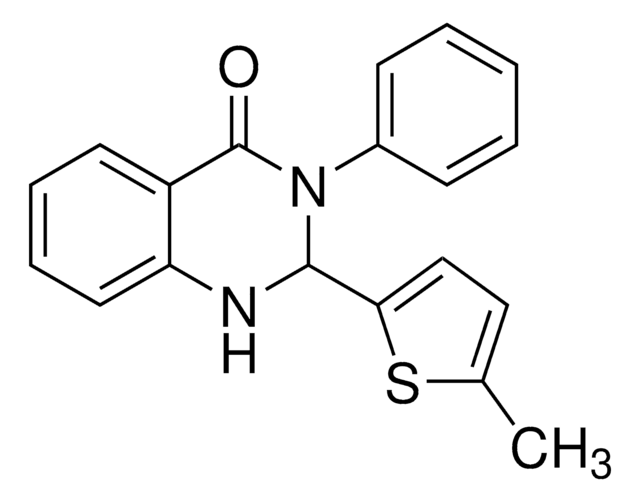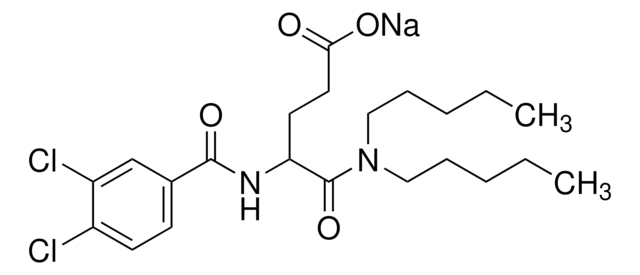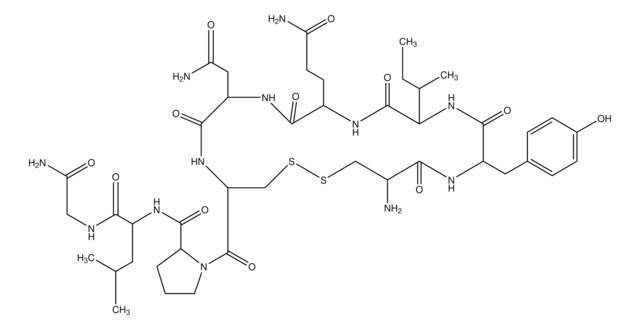Key Documents
L2545
LY225910
≥98% (HPLC)
Synonim(y):
2-[2-(5-Bromo-1H-indol-3-yl)ethyl]-3-[3-(1-methylethoxy )phenyl]-4-(3H)-quinazolinone
About This Item
Polecane produkty
Próba
≥98% (HPLC)
Postać
powder
kolor
off-white
rozpuszczalność
DMSO: >20 mg/mL
inicjator
Eli Lilly
temp. przechowywania
2-8°C
ciąg SMILES
CC(C)Oc1cccc(c1)N2C(CCc3c[nH]c4ccc(Br)cc34)=Nc5ccccc5C2=O
InChI
1S/C27H24BrN3O2/c1-17(2)33-21-7-5-6-20(15-21)31-26(30-25-9-4-3-8-22(25)27(31)32)13-10-18-16-29-24-12-11-19(28)14-23(18)24/h3-9,11-12,14-17,29H,10,13H2,1-2H3
Klucz InChI
KUECXUACQOYKNB-UHFFFAOYSA-N
Działania biochem./fizjol.
LY225910 is a potent, selective CCK2 antagonist. LY225910 blocks agonism of CCK2 by CCK-8S, the peptide agonist. LY225910 has been measured in multiple systems, including GABA efflux from cortical cultures, depolarization of spinal cord neurons (via potassium conductance), modulation of excitatory postsynaptic potentials (EPSPs) in nucleus accumbens slices, and enhancement of morphine analgesia.
Cechy i korzyści
Hasło ostrzegawcze
Danger
Zwroty wskazujące rodzaj zagrożenia
Zwroty wskazujące środki ostrożności
Klasyfikacja zagrożeń
Acute Tox. 3 Oral - Aquatic Chronic 4
Kod klasy składowania
6.1C - Combustible acute toxic Cat.3 / toxic compounds or compounds which causing chronic effects
Klasa zagrożenia wodnego (WGK)
WGK 3
Temperatura zapłonu (°F)
638.6 - 762.1 °F
Temperatura zapłonu (°C)
337 - 405.6 °C
Certyfikaty analizy (CoA)
Poszukaj Certyfikaty analizy (CoA), wpisując numer partii/serii produktów. Numery serii i partii można znaleźć na etykiecie produktu po słowach „seria” lub „partia”.
Masz już ten produkt?
Dokumenty związane z niedawno zakupionymi produktami zostały zamieszczone w Bibliotece dokumentów.
Nasz zespół naukowców ma doświadczenie we wszystkich obszarach badań, w tym w naukach przyrodniczych, materiałoznawstwie, syntezie chemicznej, chromatografii, analityce i wielu innych dziedzinach.
Skontaktuj się z zespołem ds. pomocy technicznej









